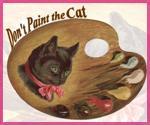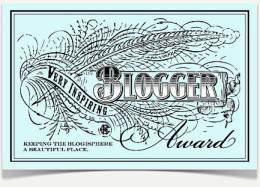Please Note: This is just a start to this page/glossary. It is very much a work in progress. I just want to make it available promptly. At initial publication, the examples only include Godey’s Lady’s Book. Additional examples and links will be added sporadically.
This glossary will be continually developing and fluid, with links to both primary resources and additional secondary information. I will be adding and editing entries continuously. Be sure to hover over the text to find all the links.
Notice the color coding. Words used in publications between 1850 and 1865 in the context of millinery will be in blue. Words not used or very minimally used between 1850 and 1865 in the context of millinery will be in green. Words or terms used more frequently in British or European publications will be in orange. Words that appear to be reenactorisims will be alerted in red. General millinery terms will be in purple. Un-categorized terms will be in black.
Bandeau – A type of headdress encircling the crown of the head sitting lower in the back. Examples: December 1861, Godey’s August 1862,
Boater hat –
Bonnet Protector – Please see this passage
Bonnet Stay – A band inside a bonnet that helps hold the bonnet in place. Please see this post.
Caledonian Hat – A smallish hat that fits lower on the head, with a turned up shaped brim. Example: Godey’s 1862.
Capeline – A sunbonnet of sheer cotton or wool fabric drawn on cane or wire.
Capote –
Caps – There were a variety of caps for wear in corresponding purposes inside. This example gives a breakfast cap on the left and a dinner cap on the right.
Chapeau Beaudrant – Described in a British publication – “especially the “chapeau Beaudrant,” invented by the celebrated milliner of that name. It is a bonnet of white or grey felt, very soft, and designing a point a la Marie Stuart in front. The crown is very small and flat, and allows the whole of the chignon to be seen. A small straight curtain just painted behind finishes the bonnet. No cap or diadem is placed under this bonnet, but it is simply tied with bright cloured strings.” (1864)
Chapeau Cloche – A country or sea-side hat with a low crown and dome curved brim, made of straw or leghorn. Example: Godey’s 1862.
Corded bonnet – A sun bonnet with cords sandwiched or tucked into the brim for stiffening.
Coronet – A headdress that encircles the top of the head. This sits higher than a bandeau. Example – Godey’s 1861 page 263, Godey’s November 1861 page 372 , Godey’s 1862, page 26,
Cottage bonnet – A bonnet with a low rising brim and rounder brim from front.
Drawn bonnet – A fashion bonnet with the exterior fabric gathered up on cords or canes. Example:
Empire Bonnet – A style bonnet taking one form in the early 1860s and another in the mid 1860s. “The simple Empire bonnet is the one most favoured this winter. Everyone knows the shape of it – narrow brim and close round the face, flat crown, and a band instead of a curtain.” (The English Domesticwoman’s Magazine, 1864 page 183) Please see this post. Example: (Description) Click here for a longer description of Empire bonnets of 1866. 
Fanchon – A style bonnet that came into fashion in late 1864. The neck line of the crown and tip have risen making them quite small. This bonnet has a small or no bavolet/curtain. Visit this post.
Finland Hat – A girl’s straw hat with a rounded crown and small brim. Example: Godey’s May 1862 page 491, description 492.
Garden Hat – A fashionable hat for strolling through the garden, possibly clipping a bud here or there. This is not for active gardening. Godey’s 1863.
Gardening Hat – A survivable hat for actively gardening in.
Gentian – A child’s hat: Godey’s 1863.
Glengarry Cap – (ADDITIONAL RESEARCH NEEDED) A soft brimless hat that sits on top of the head. Additional research needed to determine its place in fashion. Examples: “Glengarry cap in crochet” Godey’s December 1861, page 525,
Henriette Hat – Child’s Hat: Godey’s 1862.
Imperatrice Bonnet – Word used in an British publication. Impertrice Bonnet.
Irving Hat – A low crown hat with a small turned down brim. Mentioned minimally in Godey’s. Example: Godey’s 1862 page 82.
Lady Diana Hat – Leghorn hat with a brim that first turns up, then turns down. Godey’s 1862.
Leghorn – A type of straw used in making bonnets and hats. Please see From Field to Fashion
Marie Stuart Bonnet – or “Mary Stewart” bonnet. A bonnet with a brim that dips to a V in the center front. Please see this post.
Mousquetaire hat – Straw or leghorn hat with a tapered medium high crown and narrow shaped brim.

Fig. 3 is a Mousquetaire hat of Leghorn or white straw. Round the hat is a scarf of blue ribbon, with a large bow and long fringed ends at the back; in front is a rosette of black and white speckled feathers, surrounded by an edging of blue flowers or bluets. The brim is edged with black velvet. (Godey’s, August, 1864)
Night Caps – Examples: Godey’s, February 1861, page 107,
Opera Hood – Example: Godey’s 1861 A Knitted Opera Hood, Godey’s
1862 page 122,
Papillion Bonnet – Word used in an British publication. Papillion Bonnet.
Poke Bonnet –
Pork pie hat – A low crown hat with a small brim that turns up. The phrase “pork pie hat” appears very minimally in American fashion publications. — Note: this illustration from The English Domesticwoman’s Magazine, 1863, shows the hat with an upturned brim going the height of the crown or a depressed, shaped crown. Found an American publication with the use of Pork Pie: “is a style of hat worn by Her Royal Highness the Princess of Wales at Sandringham. It is of black velvet, and in form is oval with a broad brim turned up all round, something like the “pork pie” hat”
Postilion Hat – Hat with a medium high tapered crown and shaped brim. Similar to the mousquetaire hat. Example: Godey’s August 1864
Toque hat – A brimless hat.
Saratoga Hat – Child’s hat: Godey’s 1862
Slat bonnet – A sun bonnet with pasteboard or chipboard pieces stiffening the brim.
Soft Crown Bonnet – A bonnet with a firm brim of buckram, net, or straw and a crown of soft materials. This usually includes layering of net and silk with the possible addition of lace. (Soft crown bonnets are comfortable and suit a wide range of head shapes.) Examples: Godey’s 1861: Lower right Figure 4 (description), 
Spoon Bonnet – A fashionable bonnet that has a high rise through the brim, curving forward mimicking a spoon shape. From the front, the brim is quite oval.
Straw Bonnets – A type of bonnet made from straw and straw like materials either in the round with plait or woven. Examples: Spring Bonnets in Neopolitan braid, English chip, fine split, and Tuscan braid. Godey’s 1861. (Descriptions) Please see From Field To Fashion: The Straw Bonnet.
Sun Bonnet – https://archive.org/stream/godeysladysbook1863hale#page/576/mode/1up/search/bonnet+
Tudor Hat – A smallish hat with a low crown and upturned brim. Not unlike the Turban hat. Example: Godey’s 1862 page 21.
Turban hat – A smallish hat with a low crown and upturned brim. Not unlike the Tudor Hat. Example: Godey’s 1861 page 70.
Ugly – An accessory attached to the front of the bonnet brim that folds out to provide shade. A “Bonnet Shade”. This item precedes the era of focus, though does appear in one spot in Godey’s: 1863
Wide Awake Hat – This usually refers to a shallow brim hat with a shaped modest brim, 2.5-3.5″, curving down in the front and back. While this shape does appear in straw in fashion illustrations, this phrase does not appear in Godey’s 1861-1864. Additional research on the word itself to determine if the word is a reenactorism.
From MMe Demorest’s Quarterly Review, Spring 1861: 







